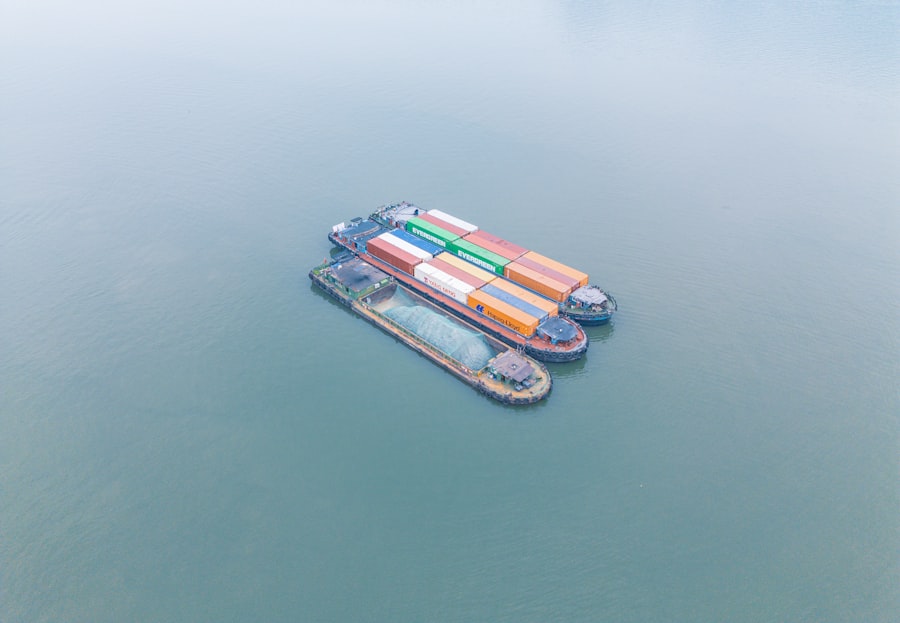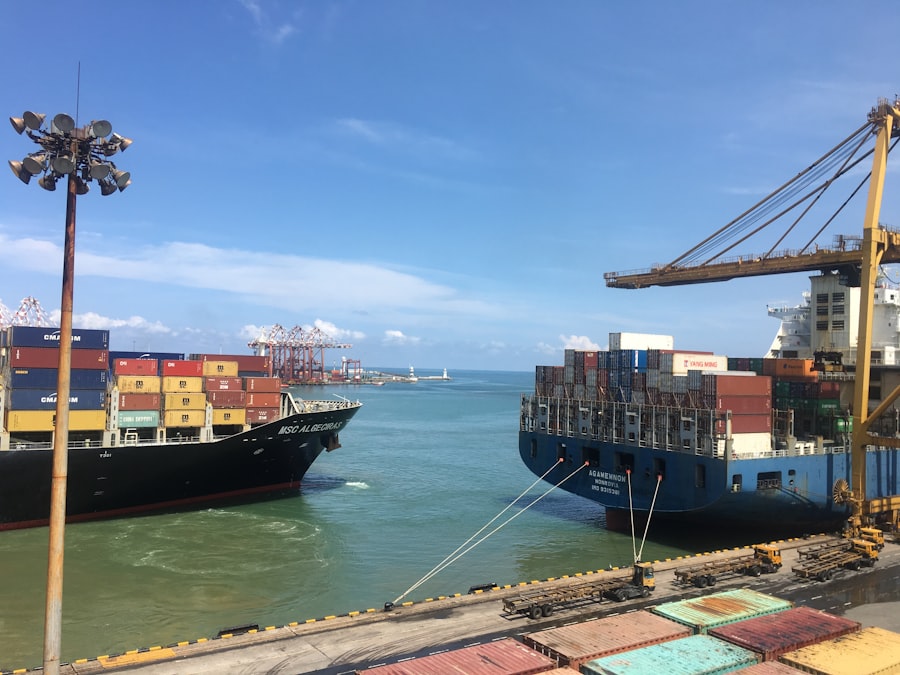Container ship delays have become a significant concern in global trade, impacting supply chains and business operations worldwide. Various factors contribute to these delays, ranging from port congestion to adverse weather conditions. Port congestion, often exacerbated by increased shipping volumes, can lead to bottlenecks that prevent vessels from docking and unloading their cargo in a timely manner.
When multiple ships arrive simultaneously at a port, the limited resources and infrastructure can struggle to accommodate the influx, resulting in extended wait times for vessels. Additionally, external factors such as labor strikes, regulatory changes, and geopolitical tensions can further complicate shipping schedules. For instance, labor disputes at ports can halt operations entirely, leaving ships stranded and cargo unprocessed.
Similarly, changes in trade policies or tariffs can create uncertainty, prompting shipping lines to adjust their routes or schedules unexpectedly. Understanding these causes is crucial for businesses that rely on timely deliveries, as it allows them to anticipate potential disruptions and develop strategies to mitigate their impact.
Key Takeaways
- Container ship delays can be caused by a variety of factors, including port congestion, weather conditions, and equipment shortages.
- Effective communication with shipping lines is crucial for managing and mitigating delays, including providing accurate and timely information and being proactive in addressing potential issues.
- Exploring alternative shipping routes can help to avoid congested ports and minimize delays, providing more reliable and efficient transportation options.
- Utilizing freight tracking technology can provide real-time visibility into the status of shipments, allowing for proactive management of potential delays.
- Negotiating flexible delivery schedules with customers can help to accommodate potential delays and minimize the impact on operations and customer satisfaction.
Communicating Effectively with Shipping Lines
Effective communication with shipping lines is essential for managing expectations and minimizing the impact of delays. Businesses must establish clear lines of communication with their shipping partners to ensure they receive timely updates regarding shipment status. Regular check-ins can help identify potential issues before they escalate, allowing companies to make informed decisions about inventory management and customer communication.
Moreover, utilizing digital platforms and tools can enhance communication efficiency. Many shipping lines now offer online tracking systems that provide real-time updates on vessel locations and estimated arrival times. By leveraging these tools, businesses can keep their stakeholders informed and adjust their operations accordingly.
Proactive communication not only fosters stronger relationships with shipping partners but also helps businesses maintain transparency with customers, ultimately enhancing trust and satisfaction.
Exploring Alternative Shipping Routes

In light of frequent delays, exploring alternative shipping routes has become a viable strategy for many businesses. By diversifying shipping paths, companies can reduce their reliance on congested ports and traditional shipping lanes that are prone to disruptions. For instance, some businesses have begun utilizing less-traveled routes or smaller ports that may offer quicker turnaround times, even if they require longer transit distances.
Additionally, alternative routes can provide a buffer against unforeseen events such as natural disasters or political unrest that may affect primary shipping lanes. By having multiple options available, businesses can adapt more swiftly to changing circumstances and maintain the flow of goods. This flexibility not only helps mitigate delays but also enhances overall supply chain resilience, allowing companies to respond effectively to market demands.
Utilizing Freight Tracking Technology
| Metrics | Data |
|---|---|
| On-time Delivery Rate | 95% |
| Real-time Shipment Visibility | Yes |
| Cost Savings | 10% |
| Customer Satisfaction | 90% |
The advent of freight tracking technology has revolutionized the shipping industry, providing businesses with unprecedented visibility into their supply chains. By employing advanced tracking systems, companies can monitor their shipments in real-time, gaining insights into potential delays and disruptions. This technology enables businesses to make data-driven decisions regarding inventory management and customer communication.
Moreover, freight tracking technology often includes predictive analytics capabilities that can forecast potential delays based on historical data and current conditions. By leveraging these insights, businesses can proactively address issues before they escalate, ensuring that they remain one step ahead of potential disruptions. The ability to track shipments in real-time not only enhances operational efficiency but also improves customer satisfaction by providing accurate delivery estimates.
Negotiating Flexible Delivery Schedules with Customers
In an environment where delays are increasingly common, negotiating flexible delivery schedules with customers has become a critical strategy for businesses. By setting realistic expectations regarding delivery timelines, companies can alleviate pressure on their operations while maintaining strong customer relationships. Open discussions about potential delays and the factors contributing to them can foster understanding and patience among customers.
Furthermore, offering flexible delivery options can enhance customer satisfaction by accommodating their specific needs. For instance, businesses might provide customers with the choice of expedited shipping for urgent orders or allow for staggered deliveries based on inventory availability. This adaptability not only helps manage customer expectations but also positions businesses as responsive and customer-centric in an unpredictable shipping landscape.
Implementing Just-in-Time Inventory Management

Just-in-time (JIT) inventory management has emerged as a popular approach for businesses seeking to minimize the impact of container ship delays. By adopting JIT principles, companies aim to reduce excess inventory while ensuring that they have the necessary stock on hand when needed. This strategy requires precise coordination with suppliers and shipping partners to ensure timely deliveries align with production schedules.
However, implementing JIT inventory management also necessitates a thorough understanding of potential risks associated with shipping delays. Businesses must develop contingency plans to address disruptions in the supply chain while maintaining operational efficiency. By balancing the benefits of JIT with proactive risk management strategies, companies can optimize their inventory levels while minimizing the impact of unforeseen delays.
Diversifying Shipping Partnerships
Diversifying shipping partnerships is another effective strategy for mitigating the risks associated with container ship delays. Relying on a single shipping line or carrier can expose businesses to significant vulnerabilities if that partner experiences disruptions. By establishing relationships with multiple carriers, companies can create a more resilient supply chain capable of adapting to changing circumstances.
Moreover, diversifying shipping partnerships allows businesses to take advantage of competitive pricing and service offerings from different carriers. This flexibility enables companies to select the most suitable shipping options based on their specific needs and timelines. In an industry characterized by unpredictability, having a diverse network of shipping partners enhances operational agility and reduces the likelihood of significant disruptions.
Optimizing Container Loading and Unloading Processes
The efficiency of container loading and unloading processes plays a crucial role in minimizing delays in shipping operations. Streamlining these processes can significantly reduce turnaround times at ports, allowing vessels to dock and depart more quickly. Businesses can invest in training for dock workers and implementing best practices for loading and unloading containers to enhance operational efficiency.
Additionally, utilizing technology such as automated cranes and container handling systems can further optimize these processes. Automation not only speeds up loading and unloading but also reduces the risk of human error, leading to smoother operations overall. By focusing on optimizing container handling procedures, businesses can contribute to reducing congestion at ports and improving overall supply chain efficiency.
Anticipating and Planning for Potential Delays
Anticipating potential delays is essential for businesses operating in today’s dynamic shipping environment. By conducting thorough risk assessments and scenario planning, companies can identify vulnerabilities within their supply chains and develop strategies to address them proactively. This foresight allows businesses to implement contingency plans that can be activated in response to specific disruptions.
Moreover, staying informed about industry trends and external factors that may impact shipping operations is crucial for effective planning. Businesses should monitor news related to port conditions, labor relations, and geopolitical developments that could affect their shipments. By maintaining awareness of these factors, companies can better prepare for potential delays and adjust their operations accordingly.
Leveraging Insurance Coverage for Delayed Shipments
In an unpredictable shipping landscape, leveraging insurance coverage for delayed shipments has become increasingly important for businesses. Cargo insurance policies can provide financial protection against losses incurred due to delays or damage during transit. By investing in comprehensive insurance coverage, companies can safeguard their assets and mitigate the financial impact of unforeseen disruptions.
Additionally, understanding the terms and conditions of insurance policies is essential for effective risk management. Businesses should work closely with insurance providers to ensure they have adequate coverage tailored to their specific needs. This proactive approach not only protects against financial losses but also provides peace of mind in an environment where delays are a common occurrence.
Advocating for Industry-wide Solutions to Container Ship Delays
Addressing container ship delays requires a collective effort from all stakeholders within the shipping industry. Advocating for industry-wide solutions is essential for creating a more efficient and resilient global supply chain. Businesses can engage with industry associations and participate in forums focused on addressing common challenges related to shipping delays.
Collaboration among shipping lines, port authorities, and regulatory bodies is crucial for developing innovative solutions that enhance operational efficiency across the board. By sharing best practices and investing in infrastructure improvements, stakeholders can work together to reduce congestion at ports and streamline shipping processes.
In conclusion, navigating the complexities of container ship delays requires a multifaceted approach that encompasses effective communication, strategic planning, and collaboration among industry stakeholders. By understanding the causes of delays and implementing proactive strategies such as diversifying partnerships and optimizing processes, businesses can enhance their resilience in an ever-changing shipping landscape. As the global economy continues to evolve, embracing innovative solutions will be key to ensuring smooth operations and maintaining customer satisfaction amidst the challenges posed by container ship delays.
In recent times, the global supply chain has faced significant disruptions, with container ship delays being a major contributing factor. These delays have had a ripple effect across various industries, leading to increased costs and shortages of goods.